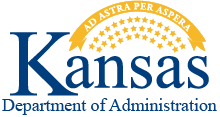Bulletin 01-01 - Donor Leave
1.0 - SUBJECT: Executive Order NO. 2001-02 for Donor Leave
2.0 - EFFECTIVE DATE: March 4, 2001
3.0 - DISTRIBUTION: Agency Human Resource Managers
4.0 - FROM: Bobbi J. Mariani, Director DATE: March 1, 2001
5.0 - PURPOSE: To clarify the implementation procedures for the State of Kansas Donor Leave policy per Executive Order NO. 2001-02.
6.0 - BACKGROUND:
Governor Bill Graves issued Executive Order NO. 2001-02, which creates a new category of paid leave for state employees in the executive branch of Kansas government and employees of Kansas regents institutions. The Kansas Donor Leave Program provides approved recovery time away from work for employees who choose to donate organs, tissue, bone marrow, blood, or blood products.
7.0 - IMPLEMENTATION GUIDELINES:
7.1 Under the Kansas State Donor Program, all classified and unclassified benefits eligible employees may receive paid leave in accordance with the following criteria:
- Employees may receive up to 30 working days of paid leave for recovery from an organ or tissue donation procedure.
- Employees may receive up to 7 working days of paid leave following the donation of bone marrow.
- Employees may receive 1.5 hours of paid leave every 4 months for the donation of blood.
- Employees may receive 3 hours of paid leave every 4 months for the donation of blood platelets or other approved blood products.
7.2 Donor Leave will not be counted against an employee’s FMLA entitlement. (K.A.R. 1-9-27)
7.3 Donor Leave does not count as time worked for FLSA purposes. All Donor Leave will be paid at the regular rate.
7.4 Donor Leave will only be paid for leave taken during regularly scheduled work hours.
7.5 An employee does not have to exhaust any accrued vacation leave, sick leave, or compensatory time before being eligible to receive donor leave.
7.6 Benefits eligible probationary employees are eligible to receive donor leave.
7.7 Donor leave applies only to active employees who donate organs, tissue, marrow, blood or blood products. Donor leave may not be used to care for family members who are donors.
7.8 An employee shall request donor leave in accordance with procedures set forth in K.A.R. 1-9-3(a).
7.9 Do not record leave for state sponsored blood drives. This time will not count against the 1.5 hrs allowed every 4 months under the Donor Leave program.
7.10 Approved Donor Leave will count toward leave accrual (CTLA).
8.0 - SHARP TIME AND LEAVE PROCEDURES:
8.1 Use the following earning codes to enter donor leave into the SHARP system:
- DON – Donor Leave #2001-02 – for non-exempt employees
- DNE – Donor Leave #2001-02 – for exempt employees
8.2 Enter the leave in .25 hour increments for both non-exempt and exempt employees.
8.3 These earnings codes are set up like the Relief from Duty and Funeral Leave earnings codes. There is no SHARP leave balance associated with Donor Leave.
8.4 Agencies are responsible for documenting and keeping track of donor leave usage. The SHARP system does not keep a running total of the donor code’s usage. However, agency personnel with security access to the SHARP Time and Leave window may view employee timesheets and add the number of days or hours the code has been used to determine if an employee is nearing the maximum allowed.
8.5 The usage of Donor Leave earnings codes will display on the donating employee’s checkstub and Total Compensation Statement as "Other."
9.0 - REFERENCES: Executive Order NO. 2001-02; K.A.R. 1-9-3(a); K.A.R. 1-9-27.
10.0 - CONTACT PERSON: Lois Ryan at lois.ryan@ks.gov or (785) 296-4274


